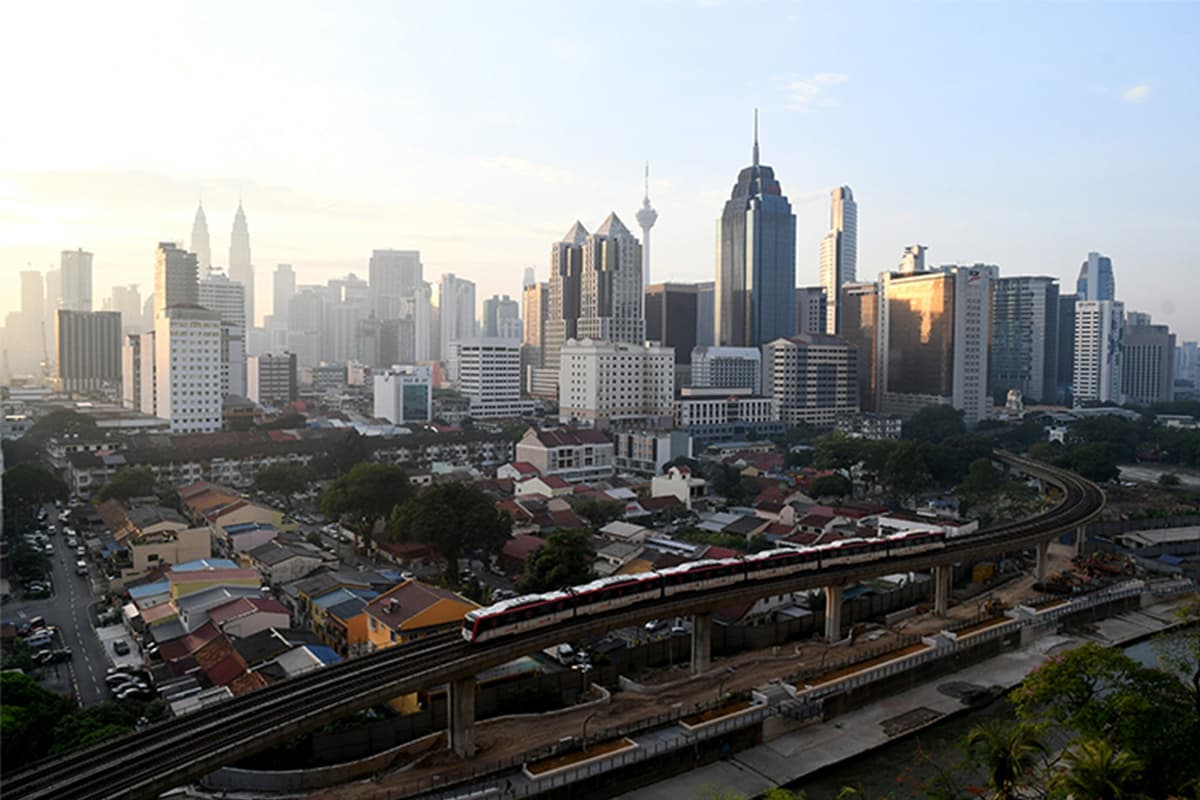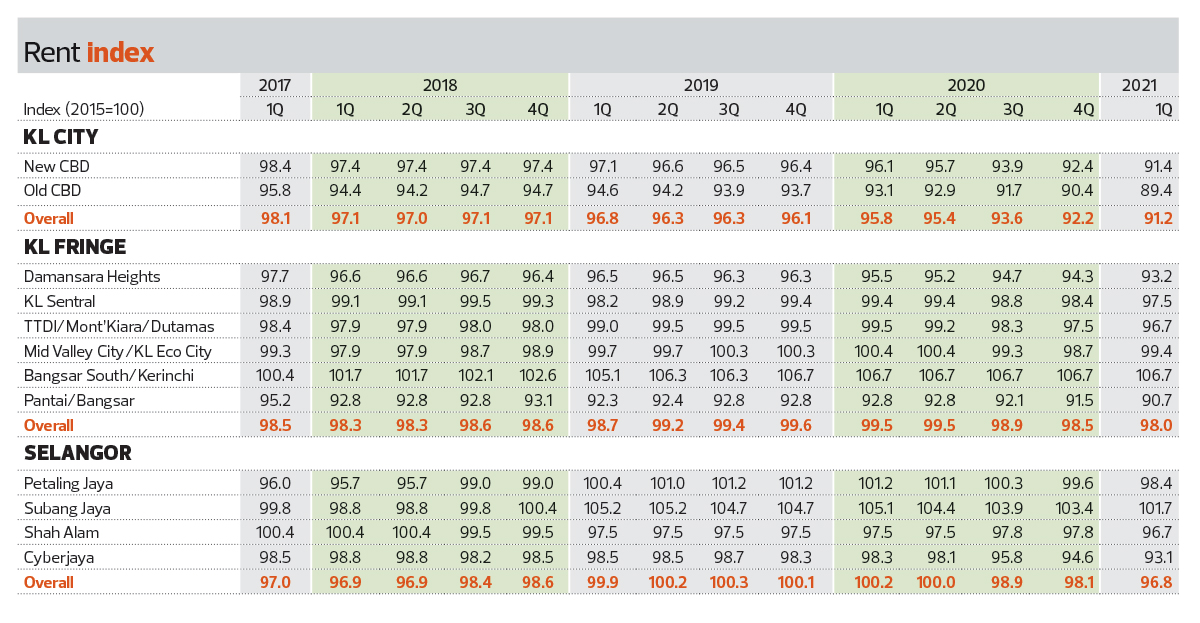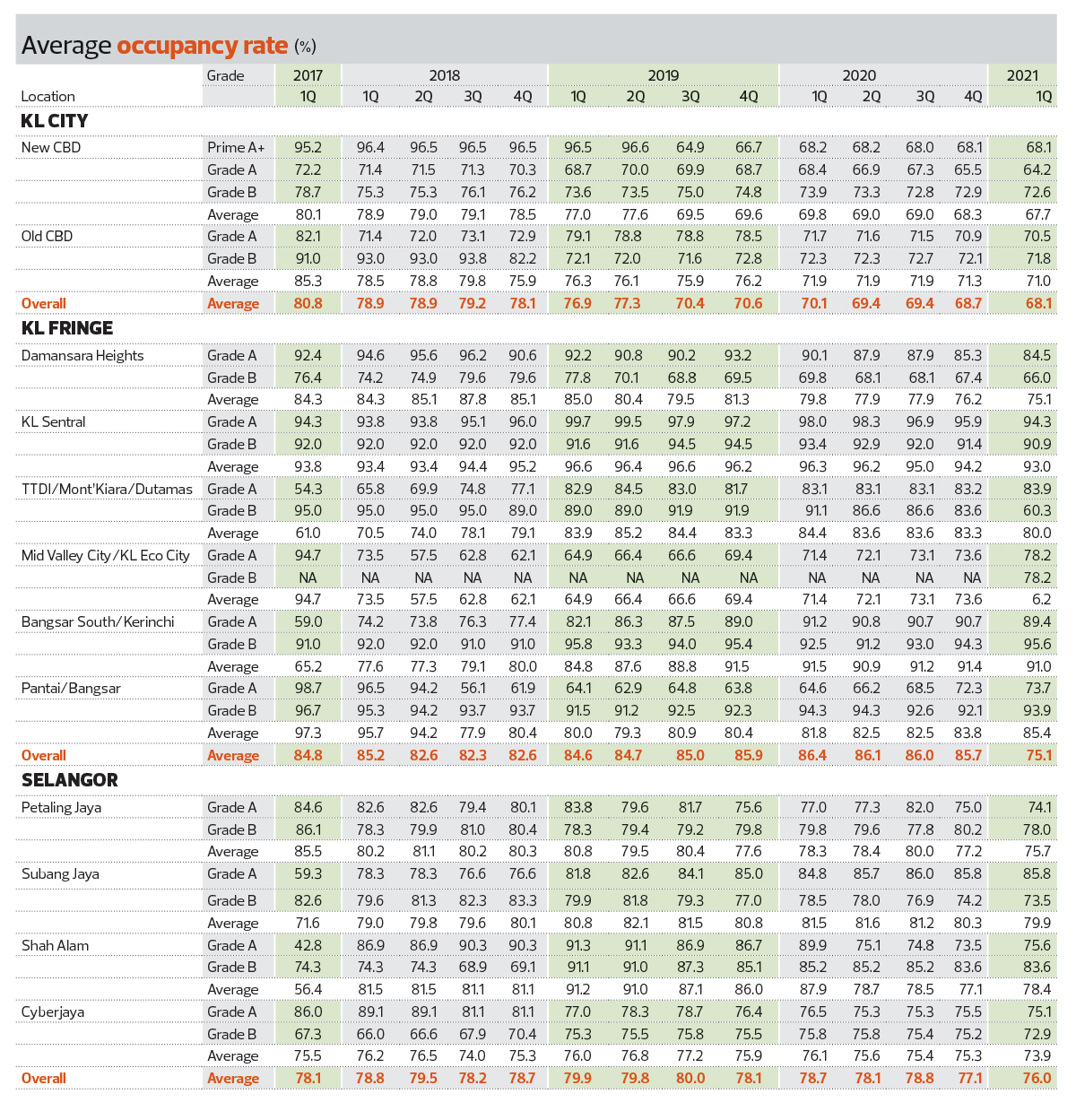
This article first appeared in City & Country, The Edge Malaysia Weekly on May 24, 2021 - May 30, 2021
The occupancy rate of the office market in Kuala Lumpur city is expected to see further pressure as the gap between supply and demand continues to widen amid weaker demand for office space. However, the occupancy rate is expected to stabilise during the year in KL fringe, supported by sustained demand for quality decentralised office space at competitive rates, says Knight Frank Malaysia.
“Despite the wait-and-see approach seen among prospective tenants and investors, an increasing number of them appear to have clearer business continuity plans. We expect to see more enquiries moving forward,” says Knight Frank Malaysia executive director of corporate services Teh Young Khean in presenting The Edge/Knight Frank Kuala Lumpur and Selangor Office Monitor 1Q2021.
He expects landlords to continue focusing on asset enhancement initiatives and leasing strategies with competitive and flexible tenancy terms for cost optimisation and tenant retention.
Teh notes that there is increased interest in co-working spaces as the flexibility they offer enables organisations to scale up or down, especially during times of uncertainty when the need to maintain cash flow is crucial. “Flexible space operators are offering new products, including hourly based corporate flex packages at a cheaper rate as well as ‘one membership to two people’ packages to accommodate the rotation between teams and cater for tenants’ current demand for short-term tenancies. More global companies are adopting flexible working arrangements for their employees, either temporarily or permanently.”
Nevertheless, the conventional office will remain important, with a tweak to its purpose whereby health and safety would remain the top priority but with new functions such as a place for physical interaction and collaboration that complements flex offices, says Teh.
He adds that more buildings have incorporated technologies such as facial recognition to enable “touchless” access as well as UV disinfection systems to ensure the health and safety of building occupiers.
“The office market recovery is highly dependent on the economy and the entry of new investments. The rollout of the National Covid-19 Immunisation Programme is expected to boost consumer sentiment and business confidence, providing a lift to the economy. Malaysia’s economy is expected to turn positive, with GDP projected at between 6% and 7.5% on the back of stronger external demand and improving domestic activity,” says Teh.
A mixed bag
The average rental rate of office space in KL city, KL fringe and Selangor continued to retreat in 1Q2021 as the year started on a more challenging note with the reimposition of the Movement Control Order (MCO) in January and declaration of a state of emergency as part of pandemic containment measures.
Prime A+ and Grade A offices in KL city saw a quarter-on-quarter (q-o-q) decline in average rental rate. At new CBD Prime A+, it was down 0.4% to RM10.49 psf while new CBD Grade A saw a decline of 1.2% to RM6.20 psf and old CBD Grade A dipped 0.8% to RM5.23 psf.
Over at KL fringe, several areas saw a q-o-q dip in their average rental rate, namely Damansara Heights (-0.9% to RM5.44 psf), KL Sentral (-0.6% to RM7.10 psf), Taman Tun Dr Ismail (TTDI)/Mont’Kiara/Dutamas (-0.5% to RM5.30 psf) and Pantai/Bangsar (-0.7% to RM5.77 psf).
Mid Valley City (MVC)/KL Eco City (KLEC) and Bangsar South/Kerinchi fared better with the former showing a 0.6% q-o-q increase to RM6.08 psf and the latter remaining unchanged at RM5.57 psf.
The average rental rate in Selangor also trended downwards. In Petaling Jaya, Subang Jaya, Shah Alam and Cyberjaya, the average rental rate stood at RM4.43, RM4.23, RM3.45 and RM3.88 psf respectively, bringing the overall rate to RM4.18 psf.
“Meanwhile, the occupancy rate in KL city continued to decline due to heightened competition, ‘flight to quality’ and the impact of Covid-19. New office supply continued to compete for the same pool of tenants and, with an increasing number of companies embracing hybrid or flexible work arrangements, more spaces were released back into the market,” says Teh.
The average occupancy rate in new CBD declined 0.9% q-o-q to 67.7% and that in old CBD was down 0.4% to 71%. The overall rate in KL city was down 0.9% to 68.1%.
“As for KL fringe, the overall occupancy rate (85.9%, up 0.2% q-o-q) remained resilient during the quarter under review, with sustained demand for quality decentralised office space supported by improved rail links,” says Teh.
The average occupancy rate stood at 75.1% (a decrease of 1.4%) in Damansara Heights; 93% (-1.3%) in KL Sentral; 80% (-4%) in TTDI/Mont’Kiara/Dutamas; and 91% (-0.4%) in Bangsar South/Kerinchi. The decline seen in TTDI/Mont’Kiara/Dutamas was due to tenant movements at Wisma Mont’Kiara.
MVC/KLEC and Pantai/Bangsar saw better occupancy rates, with the former seeing a 6.3% increase q-o-q to 78.2% and the latter up 1.9% to 85.4%. MVC/KLEC gained new tenants in Menara Southpoint and Mercu 2 @ KL Eco City.
Similar to KL city, the overall occupancy rate in Selangor was under pressure during the quarter, declining 1.4% q-o-q to 76%. Subang Jaya’s occupancy rate fell 0.5% to 79.9% while that in Petaling Jaya and Cyberjaya was down 0.9% to 75.7% and 73.9% respectively. Only Shah Alam saw an increase, up 1.7% to 78.4%.
Meanwhile, KL registered negative net absorption of about 1,170 sq ft due to minimal tenant movements or reduced leasing activities. It should be noted that the city was under an MCO from Jan 13 to March 4.
Selangor also posted negative net absorption in 1Q2021 of about 198,420 sq ft. This was mainly due to tenant movements from buildings such as CP Tower and Plaza 33. The MCO also impacted leasing activity.
Save by subscribing to us for your print and/or digital copy.
P/S: The Edge is also available on Apple's AppStore and Androids' Google Play.




